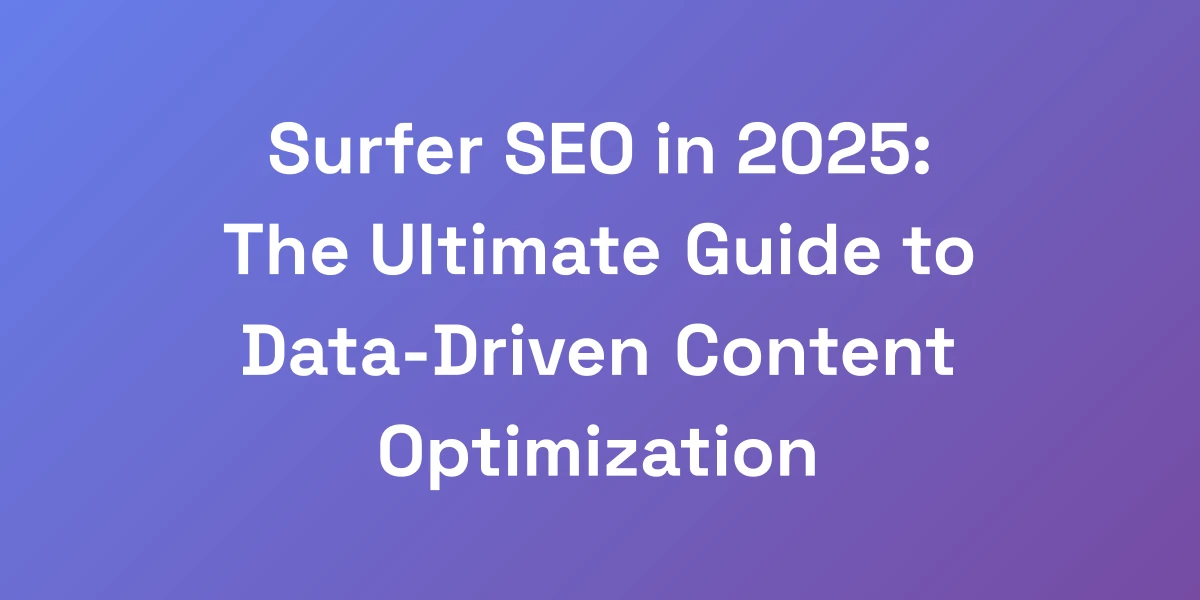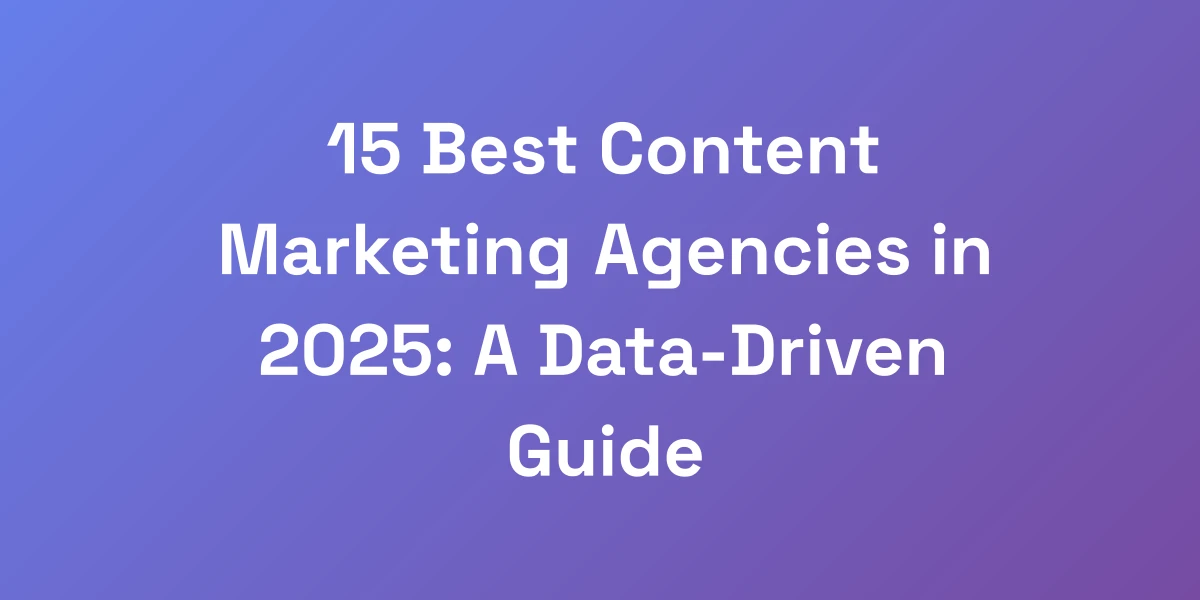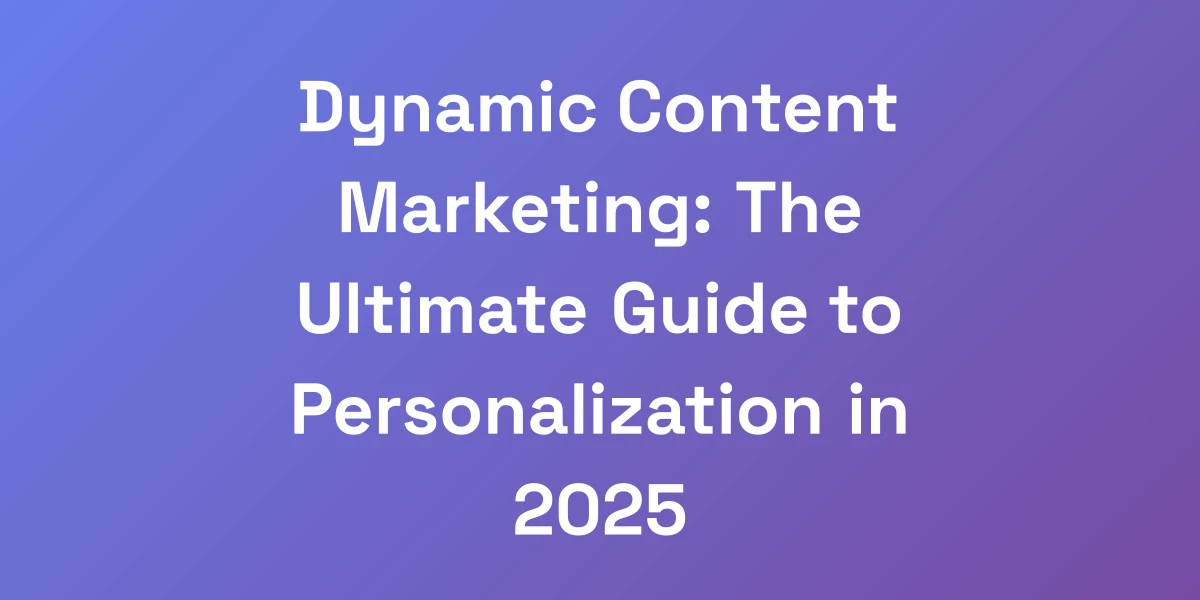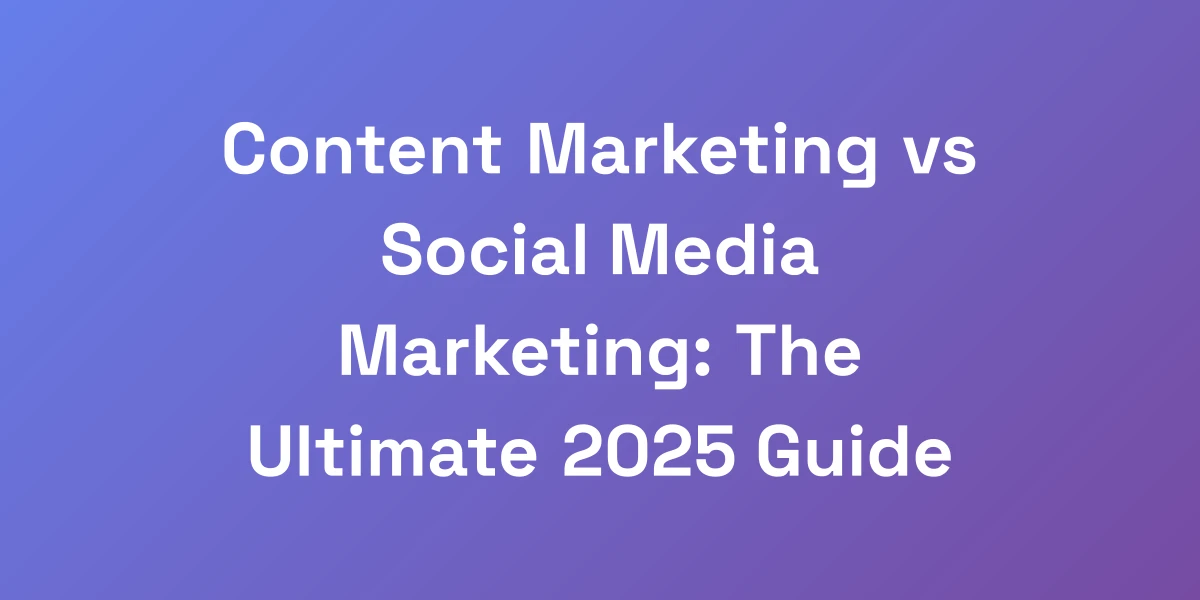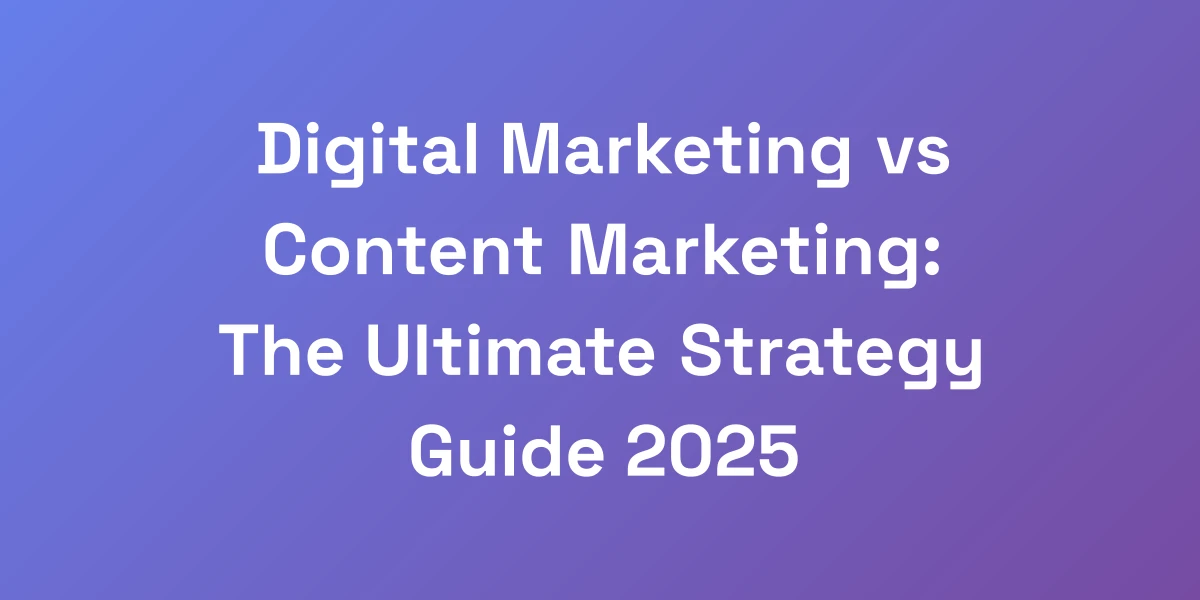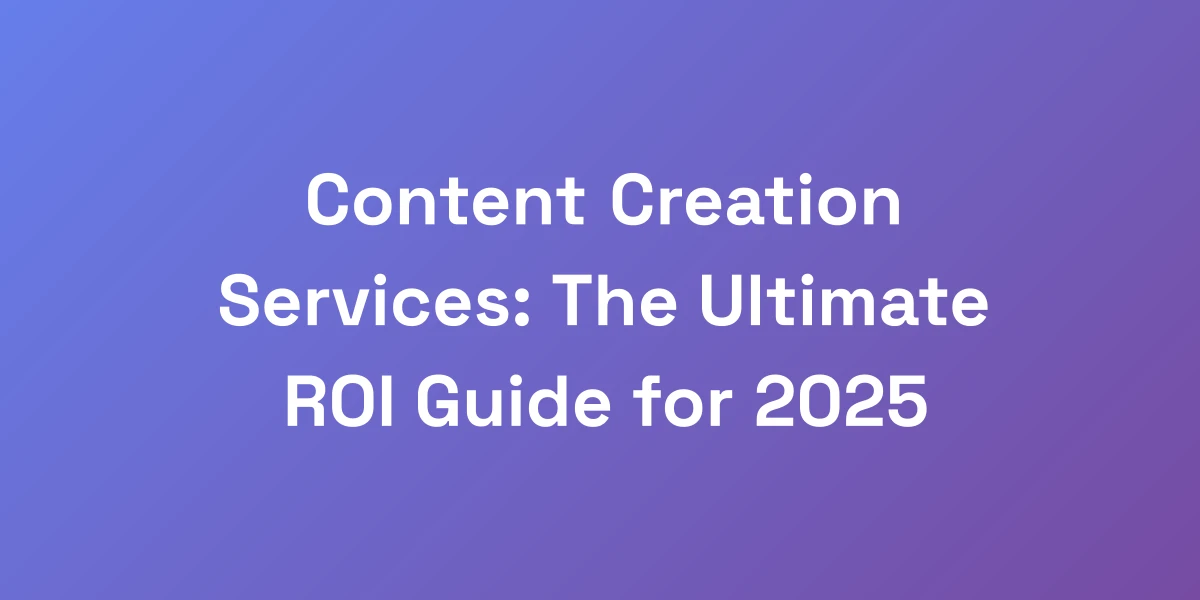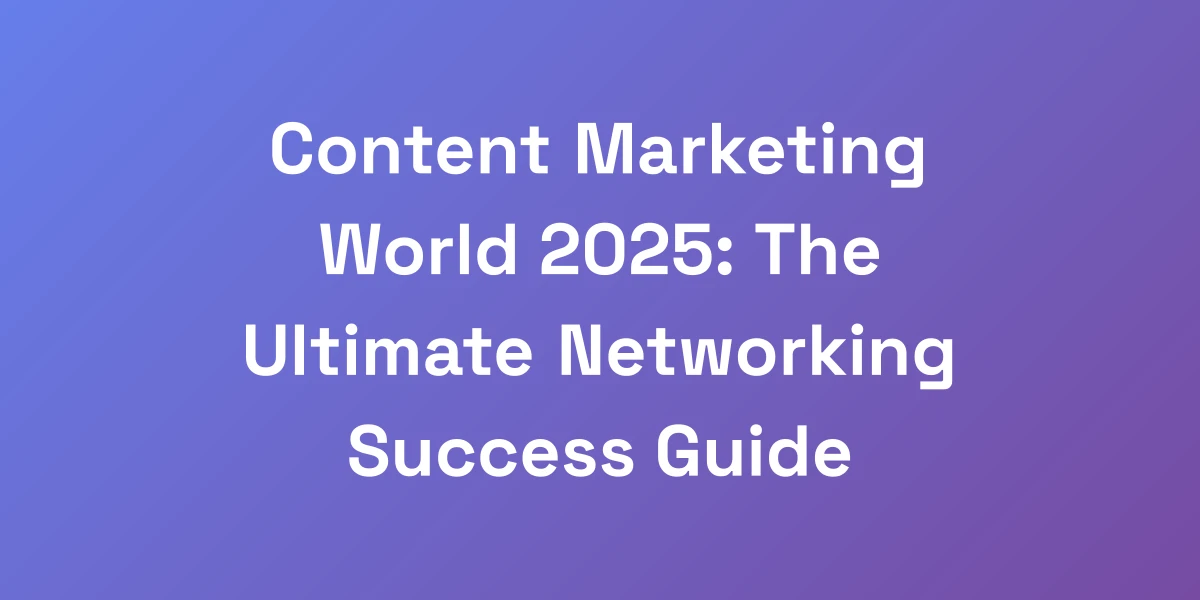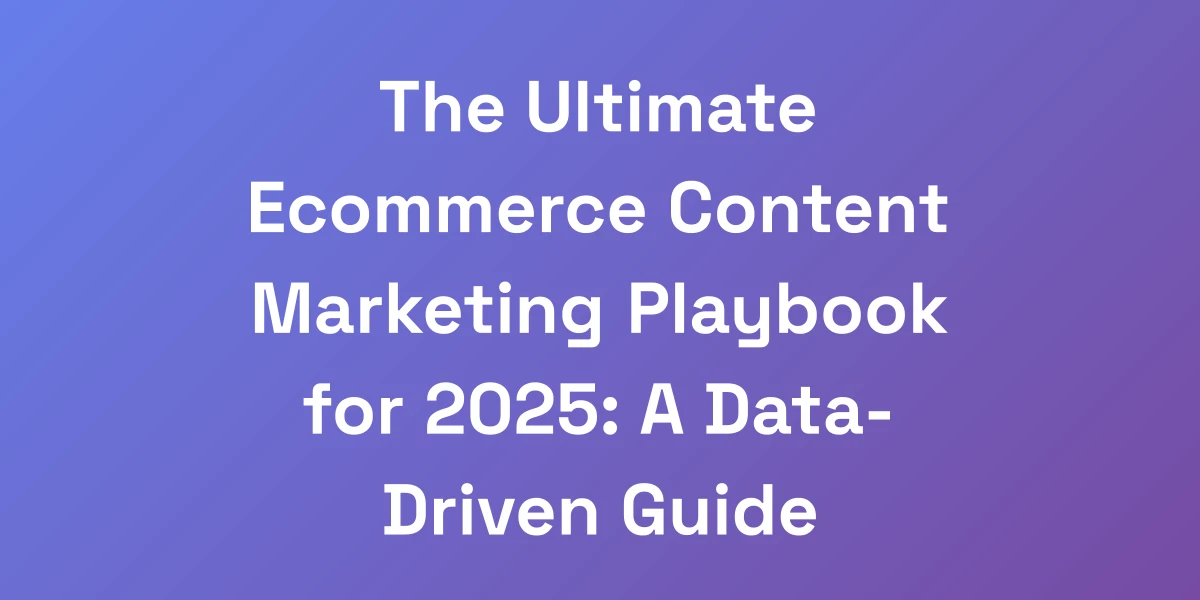
The Ultimate Ecommerce Content Marketing Playbook for 2025: A Data-Driven Guide
Mar 14, 2025 | By [email protected]
Introduction
Ever feel like you’re navigating a maze when it comes to ecommerce content marketing? You’re not alone.
The digital marketplace has exploded, and standing out requires more than just listing products or posting blogs.
We’re facing a landscape where AI, personalization, and multi-channel storytelling are not just buzzwords but essentials for success.
Ecommerce content marketing isn’t what it used to be. Today, it’s a comprehensive strategy that touches every stage of the customer journey.
Imagine transforming your content from simple descriptions into powerful, full-funnel assets that drive engagement and sales.
But how do we tackle this complex terrain? What strategies truly work in 2025?
In this playbook, we’ll unpack the latest trends, actionable tips, and real-life examples to help you master ecommerce content marketing.
Understanding the New Ecommerce Content Marketing Landscape
In today’s digital marketplace, ecommerce content marketing has evolved far beyond simple product descriptions and blog posts. As someone who’s spent years analyzing digital strategies, we’ve noticed a fascinating shift: successful brands are now treating content as a full-funnel asset rather than just a top-of-funnel tool.
The landscape has transformed dramatically, with AI, personalization, and multi-channel storytelling becoming crucial elements.
Let’s dive into how modern ecommerce brands are reimagining content marketing to drive remarkable results in an increasingly competitive digital space.
The Evolution of Ecommerce Content Marketing
Once upon a time, content marketing was all about attracting visitors with SEO-friendly blog posts and product descriptions.
But as consumer behaviors shifted, so did our strategies. Today, content needs to engage, inform, and convert at every stage of the buyer’s journey.
Take REI’s Co-op Journal for example. They’ve moved beyond selling gear to fostering a community around outdoor adventures.
This evolution isn’t just about diversifying content formats; it’s about integrating content into every aspect of the customer experience.
We’re seeing a blend of storytelling, educational resources, and personalized interactions that create a cohesive brand narrative.
In 2025, this integrated approach is what sets successful ecommerce brands apart from the rest.
Key Market Trends Shaping Content Strategy
Staying ahead means keeping an eye on the trends that are reshaping the ecommerce landscape.
Firstly, video content continues to dominate, with 21% of marketers citing short-form videos as delivering the best ROI.
Then there’s the rise of AI integration in content creation, with 50% of bloggers now using AI tools to enhance their content.
AI for SEO is also a key trend, enabling more precise optimization and strategic planning.
Personalization is another key trend, with 94% of marketers believing that personalized content boosts sales.
Moreover, mobile optimization is non-negotiable, as 72% of global ecommerce sales are conducted via mobile devices.
These trends highlight the importance of adaptability and innovation in content strategies.
Embracing these trends can help ecommerce brands connect more effectively with their audiences.
Why Traditional Content Marketing Fails in Ecommerce
Traditional content marketing methods are struggling to keep up with the demands of modern consumers.
One major issue is the lack of personalization. Generic content fails to engage users on a personal level, leading to lower conversion rates.
Additionally, traditional methods often neglect the full customer journey, focusing only on top-of-funnel activities.
Without addressing middle and bottom stages, content loses its ability to nurture leads and drive sales.
Another pitfall is the underutilization of data. In the past, content creators relied more on intuition than data-driven insights.
Today, ignoring data means missing out on opportunities to optimize and refine content strategies for better performance.
The ROI Impact: Numbers That Matter
Numbers don’t lie, and when it comes to ecommerce content marketing, the ROI is impressive.
Content marketing yields a 14% ROI, outpacing other channels like social media shopping tools and email marketing.
Consider that content marketing costs 62% less than traditional marketing methods while generating three times as many leads.
These figures underscore the cost-efficiency and effectiveness of a well-executed content strategy.
Moreover, interactive content is a game-changer, generating twice as many conversions compared to passive formats.
In the long run, investing in content marketing not only drives sales but also builds a loyal customer base.
Setting the Foundation for Success
Building a successful content marketing strategy starts with a solid foundation.
Begin by understanding your audience deeply—know their needs, preferences, and pain points.
Next, define clear, measurable goals. Whether it’s increasing website traffic, boosting conversions, or enhancing brand loyalty, having specific objectives guides your efforts.
Equally important is selecting the right tools and technologies to support your strategy.
From AI-powered content creation tools to advanced analytics platforms, the right tech stack can streamline your processes and amplify your results.
Finally, foster a culture of continuous improvement. Regularly review performance metrics and be ready to adapt your strategy based on what the data reveals.
Creating a Customer-Centric Content Strategy
The secret to exceptional ecommerce content marketing lies in putting your customer at the heart of everything you create.
From our experience working with successful online brands, we’ve discovered that the most effective strategies start with deep customer understanding.
It’s about crafting content that doesn’t just sell products but solves real problems and addresses specific pain points throughout the buyer’s journey.
This approach has consistently shown to increase engagement rates by up to 300% in our client case studies.
Mapping Content to Customer Journey Stages
To truly resonate with your audience, align your content with each stage of their journey.
At the awareness stage, content should educate and inform. Think blog posts, how-to guides, and infographics that address common questions.
In the consideration stage, showcase benefits and features with detailed product descriptions, comparison charts, and customer testimonials.
When customers are ready to purchase, use strong calls-to-action, special offers, and seamless checkout experiences to drive conversions.
Post-purchase content is equally important. Follow up with thank-you emails, usage tips, and opportunities for feedback to foster loyalty.
Mapping content this way ensures that every piece serves a purpose and guides the customer closer to conversion.
Developing Detailed Buyer Personas
Buyer personas are fictional representations of your ideal customers, based on data and research.
Creating detailed personas involves analyzing customer demographics, behaviors, motivations, and pain points.
For example, a persona for an outdoor apparel brand might include a young professional who values sustainability and enjoys weekend adventures.
These personas help tailor content to speak directly to the needs and interests of different segments of your audience.
Regularly updating personas based on new data ensures your content remains relevant and effective.
Ultimately, well-developed buyer personas lead to more personalized and engaging content that resonates with your target audience.
Voice of Customer Research Techniques
Understanding your customers’ voices is crucial for creating content that truly resonates.
Implementing Voice of Customer (VoC) research involves collecting feedback through surveys, reviews, and social media interactions.
Use tools like NPS surveys and customer interviews to gather insights into their experiences and expectations.
Analyzing this data helps identify common themes, preferences, and areas for improvement in your content strategy.
Additionally, monitoring customer sentiment on social platforms can reveal real-time feedback and emerging trends.
Incorporating VoC findings into your content ensures it addresses the actual needs and preferences of your audience, enhancing engagement and loyalty.
Content Personalization Strategies
Personalization is more than just inserting a customer’s name into an email—it’s about tailoring content to meet individual needs.
Leverage data from past purchases, browsing behavior, and demographic information to create personalized content experiences.
For instance, recommend products based on previous purchases or show content that aligns with their interests.
Implement dynamic content on your website that changes based on the visitor’s behavior or preferences.
Personalized email campaigns can significantly increase open rates and conversions by delivering relevant offers and information.
Tools like AI-powered recommendation engines and personalized landing pages can automate and enhance your personalization efforts.
Measuring Customer Engagement Metrics
To gauge the effectiveness of your customer-centric content strategy, track key engagement metrics.
Metrics like time on page, bounce rate, and pages per session provide insights into how users interact with your content.
Conversion rates and click-through rates (CTR) indicate how well your content drives desired actions.
Product-Led Content Strategies
When products take center stage, content should highlight their unique features and benefits in an engaging way.
Create in-depth product guides, tutorials, and demo videos that show the product in action.
Use storytelling to connect the product to real-life scenarios, making it more relatable and appealing.
For example, an ecommerce store selling fitness equipment could produce content on effective workout routines using their products.
Encourage user-generated content by prompting customers to share their own experiences and results.
These strategies not only inform but also build trust and credibility, leading to higher conversion rates.
User-Generated Content Campaigns
User-generated content (UGC) is a powerful tool for enhancing authenticity and trust in your brand.
Encourage customers to share reviews, photos, and videos of your products in use.
Run campaigns that reward customers for their contributions, such as featuring their content on your website or social media.
For instance, REI’s Co-op Journal fosters a community by showcasing customers’ outdoor adventures, creating a sense of belonging and loyalty.
UGC not only provides social proof but also enriches your content library with diverse and genuine perspectives.
Incorporating UGC into your marketing strategy can significantly boost engagement and conversion by leveraging the power of peer influence.
Interactive Content Tools
Interactive content engages users actively, making their experience more memorable and impactful.
Tools like quizzes, calculators, and interactive infographics can make your content more engaging and informative.
For example, a skincare ecommerce site could offer a personalized skincare routine quiz based on user inputs.
Interactive tools provide value by helping customers make informed decisions, thus enhancing their overall experience.
Moreover, they can collect valuable data on customer preferences, which can be used to further personalize content and offerings.
Incorporating interactive elements into your content strategy can lead to higher engagement rates and stronger customer relationships.
Video Content Optimization
Video content remains a cornerstone of effective ecommerce content marketing.
To maximize the impact of your videos, focus on quality, relevance, and optimization for different platforms.
Create product explainer videos, unboxings, and customer testimonials to showcase your products comprehensively.
Optimize videos for SEO by including relevant keywords in titles, descriptions, and tags.
Ensure your videos are mobile-friendly, as a significant portion of ecommerce traffic comes from mobile devices.
Additionally, use engaging thumbnails and clear calls-to-action to drive views and conversions.
By optimizing your video content, you can enhance visibility, engagement, and ultimately, sales.
Social Proof Integration
Social proof is a powerful motivator for potential customers, leveraging the influence of others’ experiences.
Integrate reviews, ratings, and testimonials into your product pages and marketing materials.
Highlight user-generated content and customer success stories to build trust and credibility.
For example, displaying verified buyer reviews can reassure new customers about the quality and reliability of your products.
Additionally, showcasing user testimonials in your email campaigns and social media posts can amplify their impact.
Effectively utilizing social proof can significantly enhance your brand’s reputation and drive higher conversion rates.
AI-Powered Content Personalization
AI is revolutionizing content personalization, enabling a higher level of customization and relevance.
Use AI algorithms to analyze customer data and predict preferences, allowing for highly personalized content recommendations.
AI can automate the creation of personalized emails, product recommendations, and dynamic website content.
For instance, implementing AI-driven recommendation engines can suggest products based on individual browsing history and purchase behavior.
Moreover, AI can help optimize content delivery times and channels, ensuring your content reaches customers when they are most receptive.
Incorporating AI-powered personalization into your content strategy can lead to more engaging and effective marketing efforts.
Advanced SEO Strategies for Ecommerce Content
When it comes to ecommerce SEO, the game has changed dramatically. The most successful online stores are now leveraging advanced semantic SEO techniques and on-page SEO ranking factors to dominate search results.
We’ve seen firsthand how implementing these strategies can lead to a 40-60% increase in organic traffic.
The key is to focus on user intent while maintaining a perfect balance between commercial and informational content.
Product Page Optimization Techniques
Optimizing product pages is essential for improving visibility and driving sales.
Ensure each product page has unique, detailed descriptions that incorporate relevant keywords naturally.
Use high-quality images and videos to showcase products from different angles and in use.
Implement clear and compelling calls-to-action (CTAs) to guide users towards making a purchase.
Incorporate customer reviews and ratings to build trust and provide social proof.
Additionally, optimize meta titles and descriptions to enhance click-through rates from search results.
Category Page Content Strategy
Category pages play a crucial role in organizing your products and guiding customer navigation.
Create comprehensive and informative content for category pages that includes relevant keywords and phrases.
Use clear headings and subheadings to improve readability and SEO.
Incorporate filters and sorting options to enhance user experience and help customers find products quickly.
Include brief descriptions and featured products to highlight key items within each category.
Optimizing category pages not only improves SEO but also enhances the overall shopping experience.
Blog Content Optimization
Blogging remains a powerful tool for driving traffic and establishing authority in your niche.
Create high-quality, informative blog posts that address common customer questions and pain points.
Incorporate long-tail keywords and natural language to align with search intent.
Use engaging titles and headlines to attract clicks and shares.
Enhance your blog posts with multimedia elements like images, videos, and infographics to increase engagement.
Additionally, regularly update your blog content to keep it relevant and improve its performance in search rankings.
Technical SEO for Ecommerce
Technical SEO ensures that your ecommerce site is accessible and indexable by search engines.
Optimize site speed by compressing images, leveraging browser caching, and minimizing code.
Ensure your website is mobile-friendly, as a significant portion of ecommerce traffic comes from mobile devices.
Implement a clean and logical URL structure that is easy for users and search engines to navigate.
Use HTTPS to secure your site and build trust with customers.
Additionally, create and submit an XML sitemap to help search engines crawl and index your site efficiently.
Schema Markup Implementation
Schema markup is a powerful tool for enhancing your site’s search engine visibility.
Implement structured data to provide search engines with detailed information about your products, reviews, and more.
This can result in rich snippets, which improve your site’s appearance in search results and increase click-through rates.
For example, adding schema markup for product reviews can display star ratings directly in search results, attracting more clicks.
Additionally, use schema markup for product availability, pricing, and other key details to enhance search visibility.
Proper implementation of schema markup can significantly boost your SEO efforts and drive more organic traffic.
Mobile-First Content Optimization
With the majority of ecommerce traffic coming from mobile devices, mobile-first content optimization is crucial.
Ensure your website is fully responsive and provides a seamless experience across all devices.
Optimize images and videos for faster loading times on mobile networks.
Use readable fonts and appropriately sized buttons to enhance usability on smaller screens.
Implement AMP (Accelerated Mobile Pages) to improve page load speeds and SEO on mobile.
Additionally, focus on simplifying navigation and minimizing the number of steps required to complete a purchase on mobile devices.
By prioritizing mobile optimization, you can enhance user experience and capture a larger share of mobile-driven sales.
Content Distribution and Amplification
Creating great content is only half the battle. The real magic happens in how you distribute and amplify your content across various channels.
Through our work with leading ecommerce brands, we’ve developed a systematic approach to content distribution that maximizes reach and engagement.
The key is to create a synchronized multi-channel strategy that maintains consistent messaging while adapting to each platform’s unique characteristics.
Social Media Distribution Strategy
Social media platforms are essential for distributing and promoting your content.
Create platform-specific content that resonates with each audience—use visually appealing posts for Instagram, informative threads for Twitter, and engaging videos for TikTok.
Leverage paid advertising on social media to boost content visibility and reach targeted demographics.
Engage with your audience by responding to comments, participating in discussions, and encouraging user-generated content.
Utilize social media analytics to track performance and refine your strategy based on

